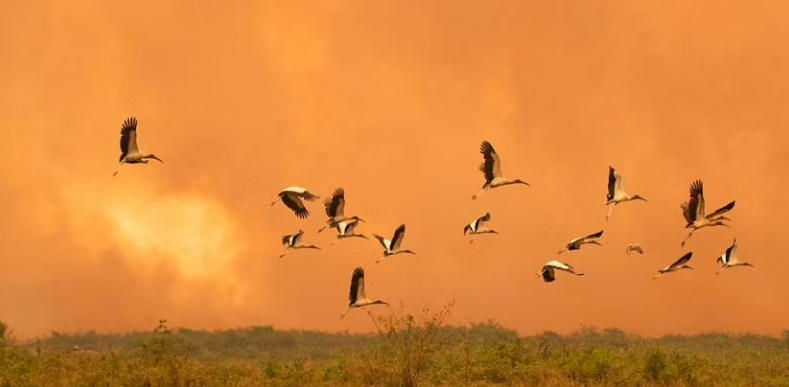Description

Copyright infringement not intended
Context
- The State of the World’s Birds, an annual overview of environmental resources published by the Manchester Metropolitan University (MMU).
- The report attributed the threat to almost half of the 10,994 recognised extant species of birds to the expanding human footprint on the natural world and climate change.
Key findings of the report
- Humans eat 14% of the world’s surviving species of birds. However, this is not the only reason why 48% of the extant bird species are undergoing population decline, a study by nine renowned avian experts and conservationists has revealed.
- The degradation and loss of natural habitats, as well as direct overexploitation of many species, are the key threats to avian biodiversity.
- The use of 37% of the surviving bird species as common or exotic pets and 14% as food are examples of direct overexploitation, the report indicates.
- The review found that 5,245 or about 48% of the existing bird species worldwide were known or suspected to be undergoing population decline.
- While 4,295 or 39% of the species had stable trends, about 7% or 778 species had increasing population trends. The trend of 37 species was unknown.
- The study underlines birdwatching, a global pastime involving millions of people, as a form of avian conservation but warns of “local negative impacts” of birds feeding valued at $5-6 billion per year and growing by 4% annually.
- Avian diversity peaks globally in the tropics and it is there that we also find the highest richness of threatened species. We know a lot less about the fortunes of tropical bird species than we do about temperate ones, but we are now witnessing the first signs of a new wave of extinctions of continentally-distributed bird species, which has followed the historic loss of species on islands like the dodo.
- The study, which involved scientists from Manchester Metropolitan, Cornell University, Birdlife International, the University of Johannesburg, Pontifical Xavierian University, and the India-based Nature Conservation Foundation (NCF), reviewed changes in avian biodiversity using data from the International Union for Conservation of Nature’s Red List to reveal the changes in fortunes of all the global bird species.
- Apart from tropical forests, the threat of natural grasslands has been particularly worrying for North America, Europe and India.
- If unique ecosystems like grasslands are to retain their diverse birdlife, governments and research groups must prioritise such landscapes and their inhabitants for conservation and ensure that they do not become plantations or woodlands.
https://epaper.thehindu.com/Home/ShareArticle?OrgId=GBO9PTKBS.1&imageview=0











